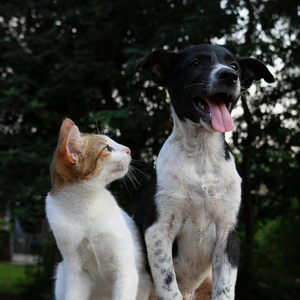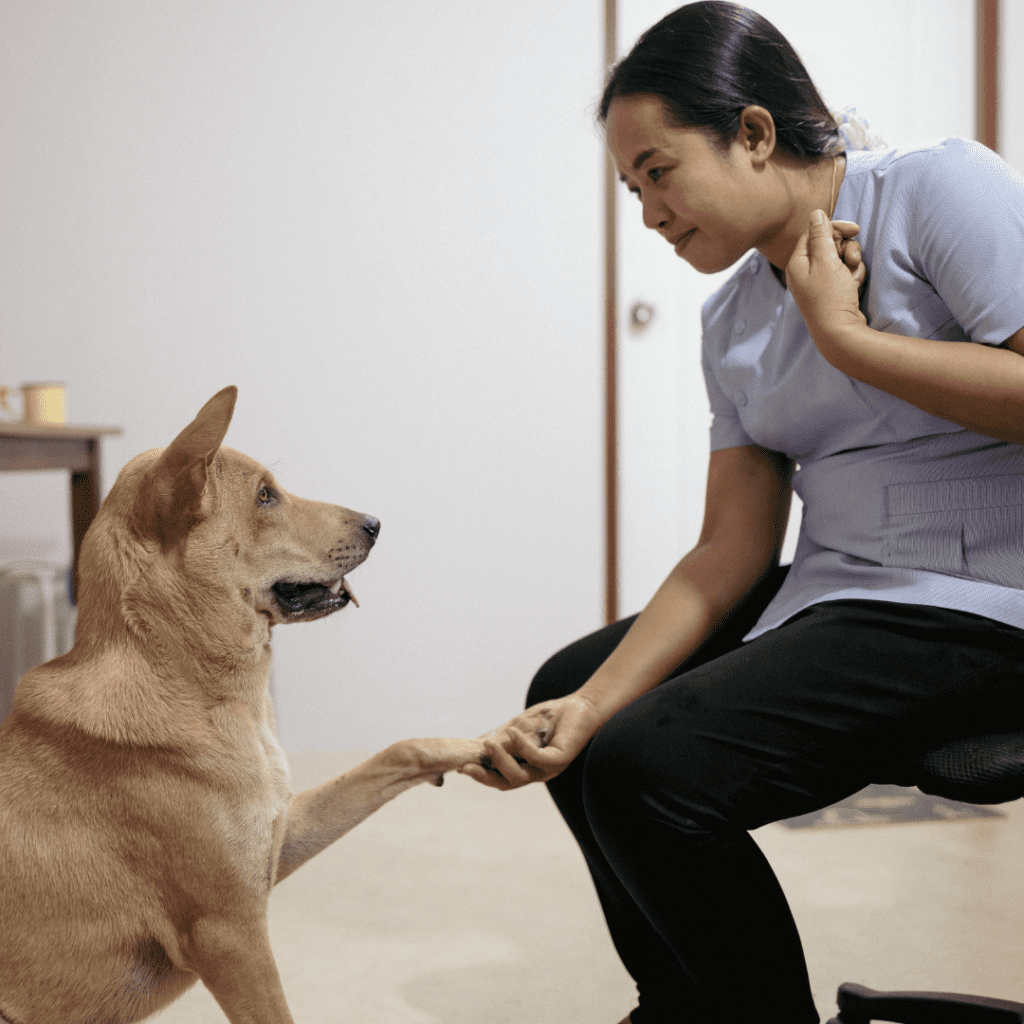When your pet encounters health or behavioral challenges, determining where to seek assistance can be a difficult decision. Your primary choice should generally be your veterinarian. Veterinarians possess extensive training and experience that allows them to identify the underlying causes of health issues. They are skilled at pinpointing illnesses or injuries that might be responsible for sudden shifts in behavior.
The Role of Veterinarians and Specialists
While many of our pets’ issues aren’t strictly health-related, such as alterations in behavior or difficulties in communication during training, your vet can guide you. Once health-related causes have been ruled out, your veterinarian might refer you to other specialists like animal behaviorists, trainers, or animal communicators to address problems like:
- Aggressive tendencies
- Anxiety-related behaviors
- Excessive barking or digging
- Inappropriate urination indoors
- Compulsive licking or pacing
- Lack of focus during training
- Heightened sensitivity
Working with Animal Behaviorists
Working alongside an animal behaviorist can assist pet owners in comprehending and reshaping unwanted behaviors. These professionals possess substantial education and a deep comprehension of a dog’s psyche. They leverage psychological principles to achieve desired behaviors and might devise treatment strategies and training methods to correct behaviors as needed. Common responsibilities of behaviorists focused on training include:
- Identifying specific problematic behaviors
- Investigating the causes of these behaviors
- Analyzing case studies to better understand specific behaviors
- Collaborating with pet owners and animals on behavior modification, training, or conditioning
- Recommending treatment plans or medications when necessary
- Educating owners about behaviors and modification techniques
In each unique scenario, behaviorists collaborate closely with both the pet and the owner. They gather information from the person who has witnessed the behavior, delving into details about the environment, triggers, and observed postures. The behaviorist might also spend time directly observing the animal’s behavior and testing strategies for modification. Throughout this process, information is exchanged verbally based on visual observations, and conclusions are drawn from past experiences. This method, however, doesn’t offer the animal a chance to express its own perspective, thoughts, emotions, and experience of the situation.
Now, envision a scenario where the pet can provide its insights into the behavior. Allowing the pet to contribute its experiences can enrich the overall picture with greater depth and clarity. This is where an animal communicator comes into play, enhancing communication among the pet owner, behaviorist, and pet.
Gaining Insights from Animals
By communicating telepathically with animals, an animal communicator facilitates a conversation using thoughts, emotions, images, and sensory information. This allows them to interview the pet about its firsthand experience effectively. Just as a doctor interviews a patient about symptoms or a therapist discusses emotions, animals can be engaged to share their experiences.
Questions such as:
- Where do you feel discomfort, and how would you describe the sensation?
- When you growl at other dogs, are you motivated by fear or anger?
- How do you perceive being asked to enter the car? What expectations arise?
- What kind of relationship do you share with the family cat? As a friend, teacher or as a foe?
These queries help us comprehend intentions, emotions, and perceptions directly from the animal rather than relying on our assumptions. This level of detail clarifies misunderstandings, promotes dialogue and collaboration, and defines expectations in a way that the pet can grasp and partake in.
For instance, consider a family pet that regularly growls at approaching dogs. The owner and trainer might assume it’s due to aggression and develop a modification plan based on that assumption. However, in conversation with a communicator, the pet might reveal that fear and uncertainty are its primary emotions. Armed with this new insight, a completely different plan can be devised, one that nurtures the pet’s confidence and facilitates more socialization and growth.
In another scenario, a dog exhibits considerable anxiety during car rides, even for short distances. Based on observed behavior, the owner might conclude that the dog fears the car or experiences motion sickness. Through communication, the dog might share its past experiences of abandonment. It recalls being driven away, left in an unfamiliar place, and never reuniting with its family. The dog incorrectly associates each car trip with abandonment. The animal communicator can correct this assumption and instill an anticipation of enjoyable rides ahead. This illustrates how animal behaviorists, communicators, and caregivers can collaborate to construct a comprehensive, detailed understanding of an animal’s behavior. When training or modification plans include insights directly from the animal’s viewpoint, they are more likely to yield quicker and more successful results compared to plans based solely on observation.
Harmonious Living
Subsequent communication sessions can further clarify any misunderstandings the pet might have, fine-tune expectations for future training, acknowledge the pet’s progress, and further strengthen the evolving partnership. When animals and humans work together as partners to problem-solve, negotiate, plan, and execute, harmony prevails in the entire household. Adding an animal communicator to your team of supportive pet professionals can offer remarkable benefits.




